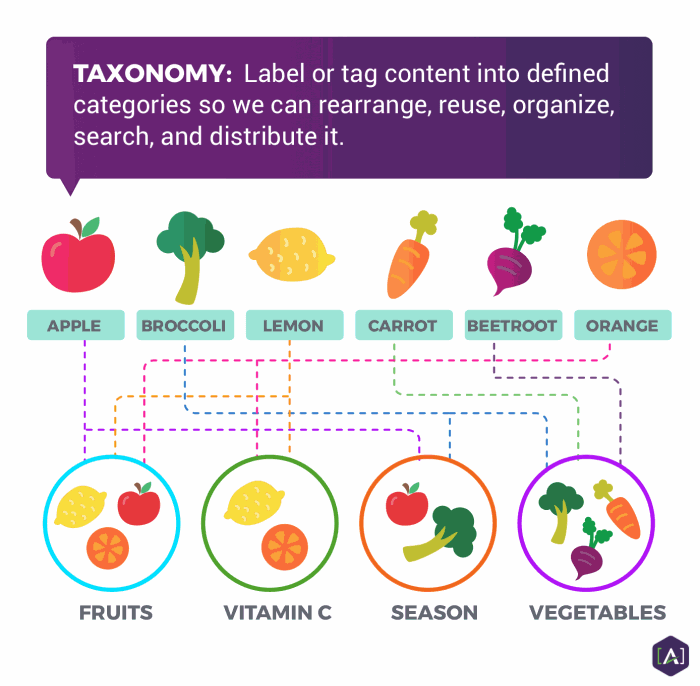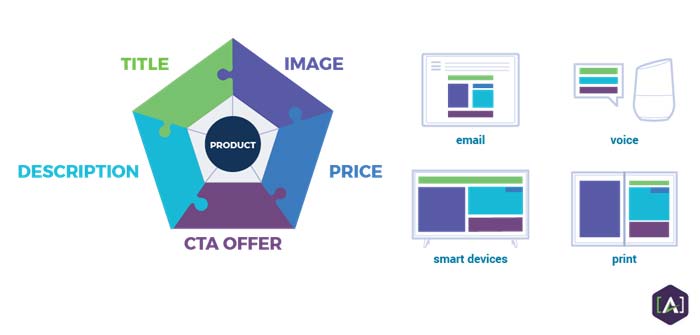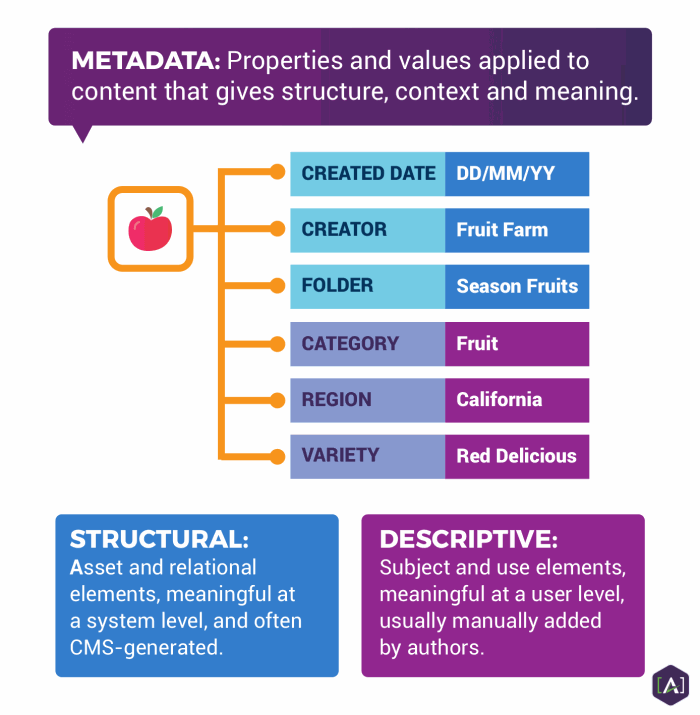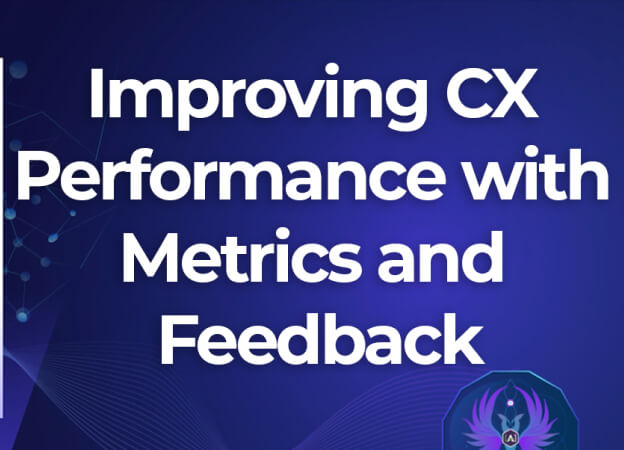As the demand for personalized and curated content increases and new platforms and applications emerge, content needs to bring in website visitors, move prospects down the marketing funnel, educate customers, and close the sale.
To accomplish the above, content must be agile and flexible in the digital world. To achieve nimble content we must engineer a website taxonomy and metadata model. Content and website taxonomy connects content together. Let’s explore how these tools help content reach customers anytime and anywhere.
For many, taxonomy is remembered from high school science as a system biologists use to classify the living world (Kingdom, Phylum, Class, Order, etc.). This biological taxonomy gives scientists a way to define similarities and relationships among the vast array of life on the planet using a set of descriptive terms and labels.
Website taxonomy works much the same way: labeling structured and unstructured content so that it can be rearranged, reused, organized, searched, and distributed in any number of ways. Without taxonomies, and the content types and elements supporting them, content remains trapped in large blocks that are difficult to adapt and reuse in other distribution channels.


Taxonomy Step 1: Label or tag content into defined categories.
Existing legacy tags and terminology are often a mess. The first step towards success is defining an appropriate taxonomy with the correct categories and tags. It is very important to perform a comprehensive analysis to gain a clear view of the current state of an organization's various sources of semantic truth across taxonomies, tags, picklists, and other term sources to build a shared view on a healthier (and easier) future state for enterprise knowledge.
Without this recommended analysis, many organizations tag and manage content with multiple taxonomies; they often live in multiple spreadsheets and systems. In extreme cases, tags are even "made up" on the fly in random ways. Despite a lack of coordination, many of these taxonomies and term sets are super valuable resources when aligned and used to build a publishing environment to support Intelligent Customer Experiences (ICX).
To help achieve this goal of ICX, [A] has created a special service, the Taxonomy, Tagging, and Semantics Health Check. This health check investigates the current state of semantics and semantic systems. The analyst team works to create an understanding of how mature processes and artifacts are currently, and where the recognized and unknown gaps are today.
Phases of this health check include taxonomy data gathering, the value of semantics to the organization, semantics technology, and platforms audit, semantics governance and usages audit, and a presentation of findings.
For an additional resource on semantics, download the [A] guide to the Core Semantic Model, a comprehensive whitepaper on the essential ingredient to building content intelligence across disparate datasets.
Taxonomy Step 2: Organize collections of connected content.
A website taxonomy, paired with information architecture, allows users to navigate through content in a way that fits their needs and interests. If the content is organized by topic, for instance, users can go straight to the topics which interest them. If also organized by type (news, podcasts, videos, etc.), users can cross-reference taxonomies to match their interests (all videos on a particular topic, for instance).
Taxonomy Categorizes Related Content for Reuse
A well-structured taxonomy can also help present related content to readers. If visitors are reading an article on starting a career in business finance, why not show them quick links to other articles on the same topic?
Providing related content is not only a boost to user experience, but also circulates valuable content assets.
Taxonomy Empowers Search Experiences
Taxonomy is the secret power behind some of the world's most elegant search experiences. Sometimes keyword searches of the text itself aren't enough to really give users highly relevant results. For example, to provide visitors with a search of recipes, being able to associate a recipe with a taxonomic node, such as "gluten-free," "vegetarian," "spicy," "Thai," or "Mexican" provides many more options than user experience designers can deliver to customers. If only the recipe text was searchable, customers are unable to request personalized uses for a recipe or be able to find appropriate recipes for specific occasions or interests.
Taxonomies can enhance search, boost retrieval result accuracy, and enable Intelligent Customer Experience.
Some examples of how taxonomy can support search include:
- Retrieve matched concepts, not just words
- Leverage metadata
- Enhance Web Search Engine Optimization (SEO)
- Support browsing through hierarchies
- Support faceted search
- Leverage text mining and auto-classification
- Support discovery (e.g. suggest terms and associated content)
- Facilitate semantic search
The Relation Between Taxonomy and Navigation
Navigation is a fixed representation of a knowledge domain in a hierarchical form, whereas a taxonomy is a way of relating concepts in a reusable way across an entire domain and associating any asset with multiple nodes within a tree.
Taxonomy is a precursor to an ontology, and navigation is only used in a single digital property and is usually a static artifact.
Another way to think about it is that a navigation is like a table of contents in a book, but the taxonomy is like the index.
Taxonomy Creates Concept Density for Robots
 Taxonomy, when implemented well, allows for easy navigation of related concepts not only by humans but also machine consumption by google search robots (or bots) like those employed by Google. Bots understand website concepts through semantic analysis. Content that is primed for machine consumption has many advantages. Thus, the more effectively that content concepts and relationships are tied together, the easier it is for robots to map how content relates. Connected, topic-specific content orchestrated via a taxonomy, creates "semantic density." Optimal search results are served up when bots see a highly relevant concentration of related content within a domain.
Taxonomy, when implemented well, allows for easy navigation of related concepts not only by humans but also machine consumption by google search robots (or bots) like those employed by Google. Bots understand website concepts through semantic analysis. Content that is primed for machine consumption has many advantages. Thus, the more effectively that content concepts and relationships are tied together, the easier it is for robots to map how content relates. Connected, topic-specific content orchestrated via a taxonomy, creates "semantic density." Optimal search results are served up when bots see a highly relevant concentration of related content within a domain.
Semantic density ultimately enhances search engine optimization and improved relevance. This is not a means to game the system, but rather a method to connect valuable content together to provide the most meaning to humans and robots.
Taxonomy and Metadata

Having covered the importance of website taxonomy, let's examine the role of taxonomy and metadata when paired with a content management system (CMS).
A simple definition of metadata is "data about data" - or, to put it in context with content management systems, information about content. Metadata is essentially a set of "statements"; each statement consists of a property or element and its associated value. These are the building blocks to creating a well-formed, structurally-sound CMS. Metadata is critical to a CMS, for organization, access, and internal processing, as well as on external-facing properties, where it helps give content structure, context, and meaning. The CMS can be engineered to intelligently leverage this structure, context, and meaning to deliver the right content to the right person at the right time. This is a foundation of forming intelligent customer experiences.

The Two Types of Metadata
The first type of metadata is structural and can be thought of as data implicit to the content item; this is often system generated or automatically discoverable. Structural metadata is often added by the CMS itself, or external automated content enrichment systems. Structural metadata includes elements like file type, format, unique identifiers, creation date, and relationships inherited by folder or content type. Structural metadata is the backbone of both a CMS and the content. Structural metadata enables detailed levels of content processing and workflows.
The second type of metadata is descriptive and can be defined as data explicit to the content item. Descriptive metadata includes data elements about the content items subject and usage, like title, document description, subject, language, and publishing date. Descriptive metadata works with search engine technology and website taxonomy to significantly improve navigation and discoverability of the content. This dynamic helps remove friction from the customer journey that always precedes a sale.
Bringing It All Together
To summarize, a taxonomy organizes the relationships between content assets, and metadata describes the assets behind the scenes. Ideally, taxonomy and metadata should be set up before authoring content, and it's best to ensure the CMS allows content owners to do both easily. Taxonomy and metadata can also be applied to content assets after they are already in a CMS through content engineering and content enrichment.
The taxonomy and metadata model will allow owners to configure and display content in any number of ways automatically, both on platforms they control, and those they don’t. Using a clearly defined structure allows content much more life and longevity. This benefits content creators and content strategists who are now able to distribute content to more channels with greater ease.
Website taxonomy and metadata are the essential electrical wiring that makes content adaptable, customizable, and easy to distribute, giving enriched content power over other static and inflexible content which can only reach a limited audience. Taxonomy and metadata are both needed to help content compete and perform better in our rapidly expanding, ever-more-intelligent digital ecosystem.



